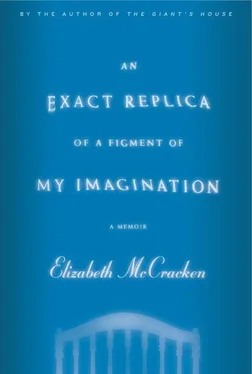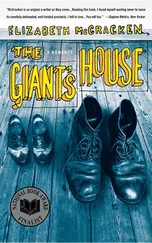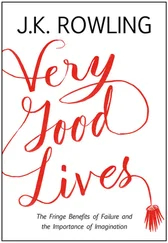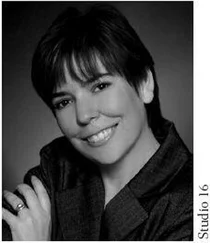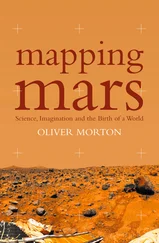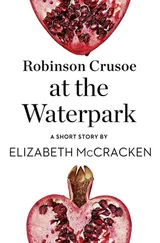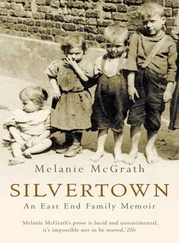“Oh, Elizabeth!” she burst out. “That’s the best possible news!”
I teared up and laughed at the same time. The best possible news! Of course it was! In my state over the house and my general fear, I’d forgotten. For a few months, Linda was the only person besides us who knew I was pregnant. I’d lean into her office and wink, or give the thumbs-up, to tell her that everything was fine. Even after I’d told a few friends, and then our families (we waited till we saw them in person), I didn’t go out of my way to tell people. My fantasy was that I’d turn up in a handful of months with a baby. “Oh, this?” I’d say. “This is what I’ve been working on in my spare time.”
All summer long we’d waited for the autopsy results. I wanted to read them and I didn’t want to read them: I was terrified that the verdict would say, essentially, Cause of death: maternal oblivion .
The report had finally shown up after a small international dance of paperwork. Using the Internet I could decipher the conclusion: chorioamniotitis, with no known histological cause. Lib knew a French-speaking doctor who spent an hour with me on the phone. The report had two halves. The first was about me, the blood tests they’d run, the umbilical cord and placenta and uterus. Olivier went through in a very calm voice, translating and then explaining the medical terms. There was some inflammation to the cord, and some dead spots on the placenta, but it was impossible to know whether these had caused Pudding’s death, or whether his death had resulted in them. I’d scanned the second half, which was entirely about his body, its perfection, its blamelessness. You couldn’t blame his kidneys. His heart was faultless.
“It doesn’t look like we need to go through that,” said Olivier. He’d been wonderful, calm, warm. “We could —”
“No,” I said. “Let’s not.”
“No,” he agreed, and I could hear the relief in his voice.
The midwives had said that the umbilical cord was looped around his neck and that the amniotic fluid was low, but we’ll never know what happened. I’m fine with that. No one explanation, no one moment I can worry over, rub at in my brain, saying, There. If only I’d done exactly that differently .
Still, pregnant for the second time, some days I just imagined that I had done everything wrong, and was doing everything wrong all over again. All chemicals seemed dangerous; ditto substances organic and dirty. Mothballs, mice, Febreze, mold, lead dust, flies — baby killers, every last one.
Anyhow, one of my kind and eloquent colleagues talked to the landlords, and they agreed to hire professional cleaners, and that was that.
No, I insist: other people’s children did not make me sad. But pregnant women did. In the waiting room of a Saratoga Springs ob-gyn practice, for my first visit, I watched the other women. The practice was next to Saratoga Hospital, which we could see from the back windows of the grubby rental house. One woman had brought a toddler boy, who held in his lap a plastic toy that played “The Wheels on the Bus” in a doorbell-to-hell electronic chime. A younger woman tugged at her low-slung maternity jeans as she backed into a chair, and then she patted her stomach. “When are you due?” asked the already mother, and the young woman answered, “Friday. I can’t wait.” I have nothing in common with you, I thought. That shows I had already forgotten the one lesson I’d vowed to learn: you can never guess at the complicated history of strangers.
All of a sudden I missed Savary, missed being the only woman in an unwed mothers’ home: I wanted to go away with Edward and not mention anything to anyone until we had an actual baby to show off. If we had an actual baby to show off. The waiting room end tables were piled high with pregnancy and parenting magazines, every one as sweet and awful and toxic as the Febreze-scented curtains back at the house. And then I felt toxic, outgassing pessimism, worry, bad luck.
Even the paperwork was intolerable. I checked boxes and wrote terse explanations. Previous pregnancies: 1. Living children: 0. Explanation . . The receptionists were being raucous behind the glass window into their office, but when the young woman took my clipboard and reviewed it she looked up at me, full of sympathy.
I sat back down and flipped through the stacks of magazines until I found a copy of O, with a cheerful, childless Oprah Winfrey on the front. Then the nurse called me in.
First the familiar urine sample. I carried the half-filled cup, as directed, down the hall to a far examining room, which was disconcertingly decorated with wood paneling and pheasant-patterned wallpaper and pheasant-themed prints. The doctor was a man in his fifties; the office was his. It felt like the den of a befuddled father of many daughters, the place he went for a little manly time alone with his pheasantalia, only to discover that no matter what, he was chased by damnable women who insisted on offering him cups of urine before dropping their pants. He flipped through my just completed records.
“This is your first pregnancy?” he asked. If I hadn’t become pregnant again, I might have gone years without saying it. This was the first time of many; I’d say it every month, then every week, then twice a week. “I had a child who was stillborn.”
The doctor was pleasant and kindly, but he seemed unsure of how to respond. Medically, I’m sure he did know, but personally he seemed uncomfortable, and who could blame him? Some things can’t be reduced to their medical facts. He cleared his throat. “Any postpartum depression with the last pregnancy?”
“Well,” I said. “Well.”
He nodded and turned back to his paperwork.
At the end of that first appointment I had to schedule the next. “Who do you want?” the receptionist asked. “Doctor? Midwife?”
“Doctor,” I said. “If that’s all right.” I didn’t blame midwifery for Pudding’s death, I just couldn’t bear the idea of too much warmth from a medical professional. All my romantic notions about collaborating on a birth had gone out the window. I wanted to be told what to do; I swore I would obey.
Besides, what were the chances?
When I returned for every successive appointment, the pregnant women in the waiting room made me sad: there they sat in the present, dreaming of the future. I couldn’t bear watching. I wanted a separate waiting room for people like me, with different magazines. No Parenting or Wondertime or Pregnancy, no ads with pink or tawny or pearly smiling infants. I wanted Hold Your Horses Magazine. Don’t Count Your Chickens for Women. Pregnant for the Time Being Monthly . Here I was, only in this second, and then the next, and nothing else. No due dates, no conversations about “the baby” or what life would be like months from now. No “This time will be different” or “Listen, it will all be worth it when you hold your child in your arms.” What I wanted, scrawled across my chart in shaky physician’s cursive: NOTE: do not blow sunshine up patient’s ass .
I rotated through the doctors, and they all seemed perfectly capable. In the unlikely event (my God, how we strived to ever lower our expectations) that I actually had a baby, any one of them would be welcome to extract it.
And then I had an appointment with Dr. Knoeller.
Almost immediately Edward and I took to calling Dr. Knoeller “Bones,” because she was a doctor (short for Sawbones, like the doctor on Star Trek ) and because she was extraordinarily thin, but mostly, I think, because we instantly worshipped the ground she walked on and it helped us to be irreverent about one small thing. The appointment was our last checkup of my first trimester, and she looked at the chart.
Читать дальше
